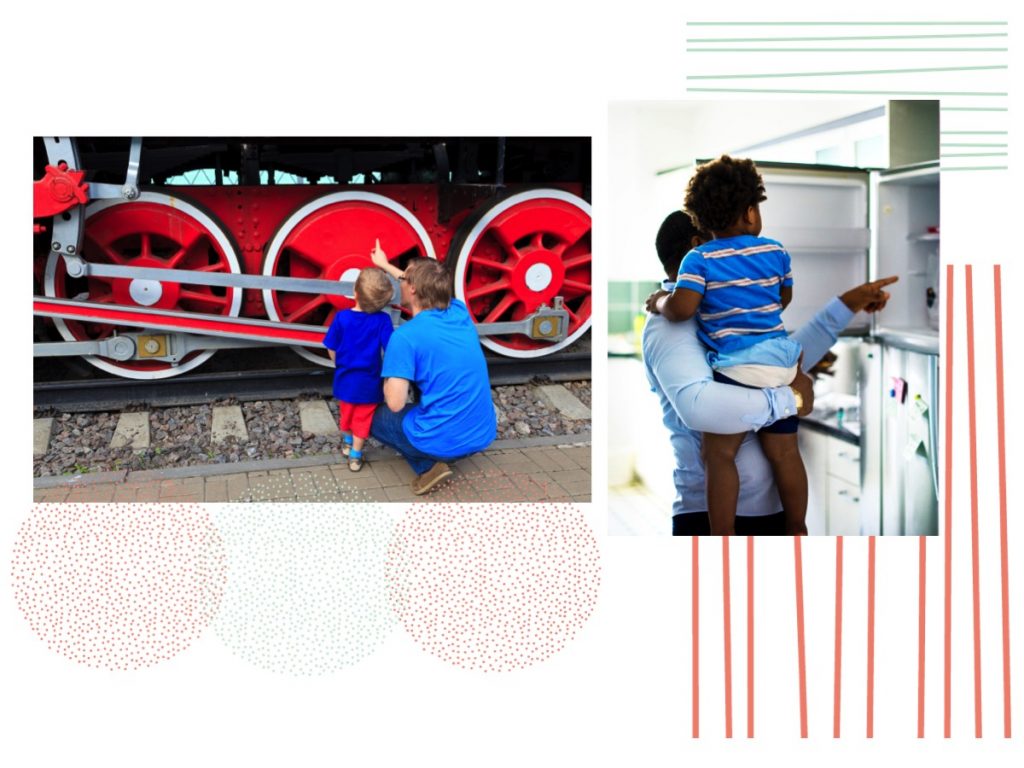
By the age of 2, children know the names for some common shapes. These are shapes like circles, squares, and equilateral triangles. By 2.5 years of age, children know more shape names and can apply them in more instances. They are also better at recognizing non-standard shapes. But they are still learning. They have more difficulty identifying shapes “in the wild” that are part of an object. For example, a refrigerator is also a rectangle, or a wheel is also a circle. Children have less experience recognizing shapes in the world that might not look exactly like the ones in their shape sorters or books.
Adults may also be missing opportunities to support children’s shape knowledge. One study found that childcare providers do not spend much time talking about shapes. Researchers observed providers and children (under age five) in a high-quality childcare setting. Providers mentioned shape names only 26 times across 40 hours of observation.
One of the best ways to increase children’s shape knowledge is through experience! It’s important to do more than teach shape names. Help children discover the important features of shapes too. Guide children’s learning by asking questions such as, “How many sides does this shape have?” Talk about the properties of different shapes, like the number of sides and corners. For example, “Your book is a square because it has four sides of the same length.” Or, “A stop sign has eight sides. It’s an octagon.” Understanding the names and properties of shapes is important for school readiness. Early geometry knowledge is related to children’s future success in STEM fields.
-
- Direction and movement
- refers to the path along which a person or object moves
- Shape awareness
- is the ability to recognize and identify shapes
- Space and position
- refers to the relationship between objects
- Spatial awareness
- includes understanding shape, size, space, position, direction, and movement
- Spatial language
- refers to words that describe the location of objects in space
- Spatial thinking
- is a set of mental skills that we use to reason about the shape, size, position, direction, and movement of objects